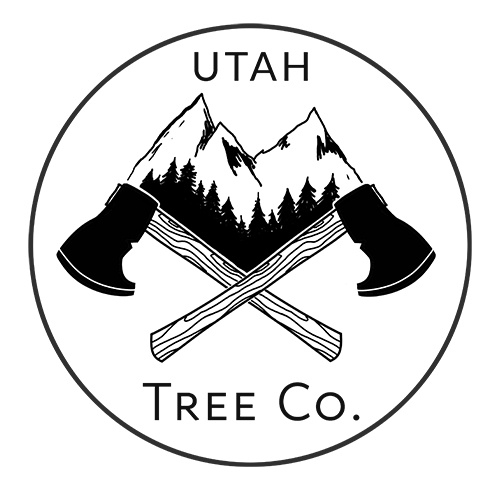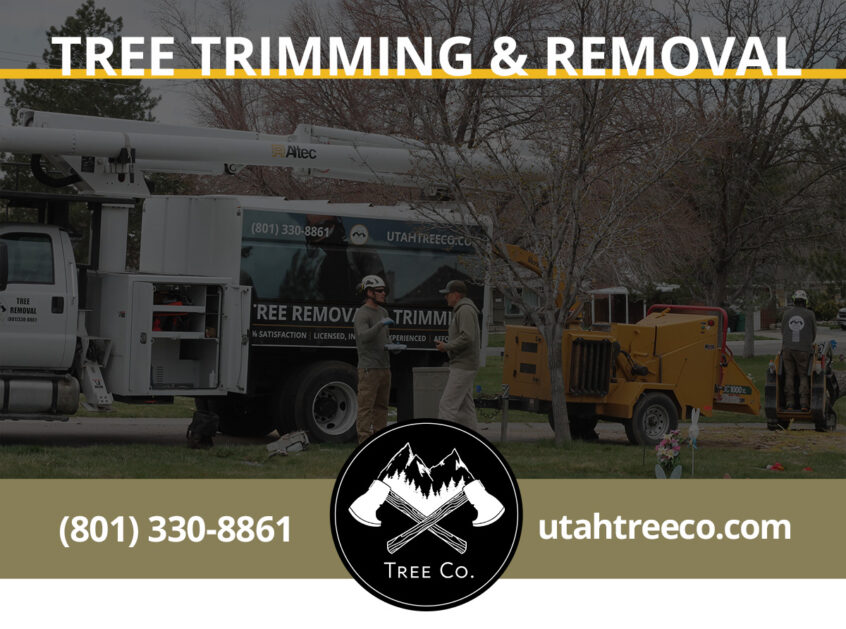Who doesn’t love having trees on their property? They’re an integral part of our environment, a major source of oxygen, and suppliers of much-needed shade during our hot Utah summers.
However, trees can also become nuisances if they aren’t planted properly. In fact, they can gravely damage homes and other structures if planted too close to the buildings. Removing these trees may become necessary, for both safety and aesthetic purposes.
As experienced tree removal services providers, we’ve witnessed the harm trees can inflict on standing structures.
The best way to prevent this damage is by teaching others about the destruction that unwanted trees can cause to property and other plants.
6 Problems Trees Can Cause When Improperly Planted
Here below are six of the problems that trees can cause when improperly planted or unmanaged.
1) Structural Damage to Property
As mentioned, trees can damage any structure that they’re planted too close to. Homes built on wooded lots, or houses where trees are used to create boundaries between properties, are especially at risk. Homeowners may fail to remove hazardous trees, leaving some standing too close to their properties and homes.
Homeowners sometimes end up planting trees too close to buildings because they think they’re planting shrubs. They might not know how tall they’ll grow in a few years. This is dangerous since the maturing trees can damage the home’s siding, windows, and other parts.
If the growth of nearby trees goes unchecked, their roots can ruin your home’s foundation. It is crucial to detect this issue before the rooting system develops, and have a professional tree care services provider either perform safe tree removal or relocate it.
Overgrown trees can also pose a risk due to their large branches, especially when the weather gets windy or stormy. These heavy branches can fall on your home and damage its structure – or even worse, harm a person or pet. If the tree is too large, even your neighbor’s home and other nearby people and structures could be at risk.
2) Compromised Roofs
Overgrown limbs and branches of trees can hit your home’s roof and seriously damage shingles during windy weather. This can lead to immense damage to your roof, creating links or removing/damaging shingles.
Moreover, the weight of overgrown branches can cause them to break and fall on your property. These can strike your roof and windows, cause cracks, or even completely shatter walls. This damage can be hefty, and repair costs can easily climb to thousands of dollars.
3) Drainage Problems
Most residential drainage problems are the result of poor turf growth, but these issues can also be triggered and intensified by overgrown or overcrowded trees.
Overgrown trees can block sunlight from reaching the soil, hindering the necessary evaporation of moisture. If the soil continues to remain wet, the grass and other plants growing there are unable to receive the resources they need to grow. This can lead to diseased plants and soil instability.
Drainage issues can also be caused when the roots of trees grow into drainage and sewer pipes. If you’re not sure what issue is plaguing your drainage system, have an experienced tree removal specialist take a look at the problem and help clear it out.
Often, this issue can be addressed with a high-pressure hose. In some cases, tree removal may be necessary to treat serious drainage problems.
4) Harm to Other Plants and Trees
Trees tend to have large roots, which consume more resources compared to the other plants and shrubs alongside them. Not only do they take up the lion’s share of the soil nutrients, they can also disturb the soil’s pH level.
If you’re considering adding another tree or plants around an existing tree, make sure to get the soiled tested beforehand. You can talk to tree care service providers to know about which plants can thrive together.
The last thing you want is to plant a tree that will detract crucial water and nutrients from other plants. Such a problem could ruin all of your landscaping plans.
Also, when trees are planted too close to each other, they have to compete with one another for sunlight, soil, water, and soil nutrients in order to grow. Eventually, the trees that get inadequate resources become susceptible to disease and decay, resulting in their death.
You may need to remove trees if they are harming other plants or are sucking the life out of other nearby trees.
5) Havoc on Structures
Roots of trees can not only damage your home’s foundation, but they can also destroy your property’s driveway, patio, and sidewalks if they sneak under concrete or stone. You might be left with perilously uneven or cracked walkways.
Tree trimming may not be of much help in situations where the roots are the real culprits. As a result, you’ll have to redo your hardscape or remove the problematic tree.
Many homeowners consider cutting the tree roots that are damaging the hardscape. However, doing so can result in an infection at the site of the cut. The disease or decay can spread to the trunk, eventually killing the tree. It might be better to just remove the tree from the get-go.
Seasoned tree removal services providers will always advise against planting trees too close to any hardscape on your property. You can also design your hardscape away from a maturing tree by consulting a tree care services company. They will give you a good idea of how big the tree will likely grow and decipher how large the root systems can possibly be. You can then plan your hardscape accordingly.
6) Hiding Place for Pests and Other Threats
You might not realize it, but large trees with dense canopies serve as effective hiding places for animals, pests, and rodents.
Rats, possums, snakes, and other creatures can easily scurry among the branches of an overgrown tree. If the branches reach out towards your home, the pests hiding therein can gain entry into your house and onto your roof.
Human threats, like burglars, can also find hiding places in the thickness of an overgrown tree’s foliage, then gain quiet and undetected entry into your house. Removing trees is sometimes the safest choice for your home and family.
In Conclusion
Whether it is tree trimming or tree stump removal, you can take several steps to ensure that your favorite trees remain healthy and grow bountifully.
Overgrown trees can prove to be hazards when left unmanaged or when they are improperly planted. Proper tree care (or even timely tree removal) can help prevent harm to humans, buildings, and pets.
Healthy trees are not just safer for your property. They also help augment the beauty of your home’s exterior. Moreover, having good landscaping with well-trimmed trees can boost your property’s value. Everyone loves a property with beautiful, well-kept trees.
Hopefully, the above-mentioned points will help you understand why unmaintained trees can be dangerous, how they can damage life and property, and why tree care services are super important.
When you need professional residential/commercial tree removal services, look no further than Utah Tree Co. Our experts are licensed, insured, and certified to get the job done quickly and safely. Contact us today to avail yourself of our high-quality tree care services.

